
How To Set Up An Effective Content Planning System To Increase Your Leads
Content marketing is a perfect lead generation medium for many reasons: It lets you diversify your rankings, generate natural backlinks (provided you publish useful content that answers users' questions effectively), build customer loyalty (by growing your email list) and turn your site into an industry resource that re-enforces all the above opportunities and creates so many more (including building your brand awareness and reputation).
However, content marketing works only if there's thorough planning behind it, which is something I'll elaborate on further in this article. This guide will help you build content with purpose, which will help you increase your site conversions by:
- Meeting users' needs better (going beyond your actual product range)
Putting together timely content to increase exposure of your content
Expanding brand-focused content to answer customers' questions on-site
Let's get started.
1. Start With Keyword Research
1.1. Organize keywords by relevancy
It always starts with keyword research: It helps you understand what your customers are typing in Google's search box, and enables you to create content that meets their needs.
If you are just starting niche research, you may want to start with keyword clustering, i.e., grouping keywords by relevancy. Keyword clustering helps in research because it gives you a high-level view of the topic.
Serpstat is the best tool on the market when it comes to keyword research. It doesn't just group keywords by a common modifier (i.e., secondary keyword). Instead, it is looking at how many common URLs show up for different search queries, and thus analyze how related those queries are.
To give you an example of keyword clustering in action, “hiking” keywords have been broken into the following groups by Serpstat:
- “hiking sandals”
“hiking shoe(s)”
“hiking tips”
+ lots of area-related groups, e.g., “colorado hiking”, “seattle hike”, etc.
Clicking any group gives you a list of actual closely related queries:
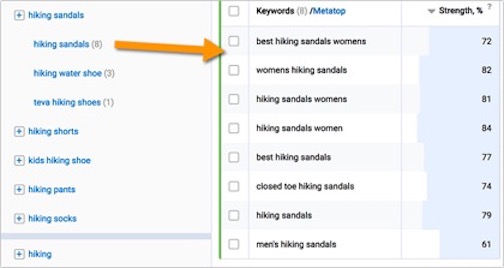
1.2. Organize keywords by task
From there, you can quickly come up with the plan on how you are going to address each group. For example, “best hiking sandals womens” and “hiking sandals women” are basically the same phrase, so you simply make sure you mention different variations of the phrase within your content (when it makes sense, of course). However ...
- hiking sandals for women
men's hiking sandals
closed toe hiking sandals
... are three different subtopics, so you may want to use them as subheadings/subtopics within one article to make it more comprehensive.
1.3. Organize keywords by intent
People searching Google may intend to perform different types of actions:
- They may intend to buy (in this case, we say they have a "commercial intent"). These queries contain strong commercial modifiers, such as “buy”, “deals”, etc.
They may intend to research a topic (in this case, we say they have an "informational intent"). The most obvious queries with an informational intent are those that include the following modifiers: “how to …”, “why”, etc.
They may intend to learn more about a certain company to see if they want to deal with it (in this case, we say they have "navigational intent" because they know exactly where they want to "navigate" after they are done). These queries always contain a brand name or a product name.
The key to serving our customers' needs better is to match our pages to one of those types of intent listed above. There's no reason to try to rank an article for a query that represents a strong commercial intent because those searching for this phrase want to buy stuff, instead of reading an article.
That being said, there's another type of keyword intent that is very essential for content marketers called "transactional," which lies somewhere in the middle of commercial and informational intent. As an example, people searching for “hiking sandals for women” may want to either buy or research different types of hiking sandals, so it makes perfect sense to target this term in your content and still match the user intent quite well.
To identify intent, use your best judgment by putting yourself in your customers' shoes. Each time you look at a query, ask yourself this question: "What would I want to do if I were searching for this?” Additionally, perform a search each time and look for Google's cues. For example, if Google shows related projects for a particular query, it has already identified that people searching for it mostly intend to buy:
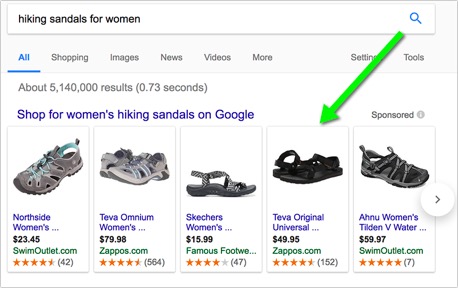
To learn more about all kinds of Google's search results that can help you identify keyword intent, read here.
Further reading: If you are into local business, Directory Journal's Michael Gray put together a great keyword research guide that still stands true.
1.4. Organize keywords by content type
Now that you have identified queries to target in your content, label those with all sorts of content assets you want to create around them. My labels usually look as follows:
- A blog post
A blog post + content upgrade (i.e., something you'll allow to download, such as an e-book, cheatsheet, comparison chart, etc.)
An evergreen article
A new item in my FAQ section (these are usually targeting navigational queries)
An update to my old article
A video, etc.
To put all these labels together, here's an example of my keyword worksheet that I use to plan my content:

2. Understand Your Customers Better
2.1. Take a look at seasonal trends
Prior to creating an actual editorial calendar, I always look at seasonal trends and yearly holidays that help me target interest peaks better. For that, I use all kinds of online calendars:
- National Health Observances 2018 at a Glance
Official holidays: timeanddate.com
"Weird"/funny days: DaysOfTheYear.com
Professional holidays: Wikipedia calendar
To makes things easier, I label those seasonal content ideas right within my keyword worksheet:

2.2. Collect more insight from your customers
Navigational queries are not the only source of inspiration when it comes to content around your brand. Develop an efficient system that would help you collect your customers' questions and include those in your content plan.
I use Salesmate to record all customers' questions, and refer to it every time I am working on my content editorial calendar:
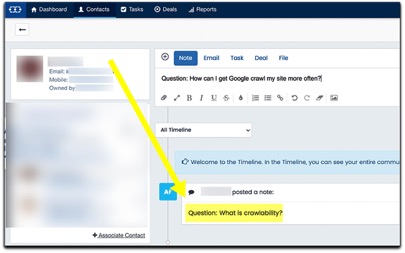
2.3. Monitor social media context
Another source of content inspiration is Twitter because it reflects the current trends you need to be covering on your site to catch the interest peak. It's next to impossible to predict Twitter trends in advance, so I use monthly placeholders in my editorial calendar when my team or I will be covering what's hot in the industry.
To monitor Twitter trends efficiently, I use Cyfe because it puts all my Twitter searches in an archive for my team to refer to when it needs to cover all the hot trends for a month:
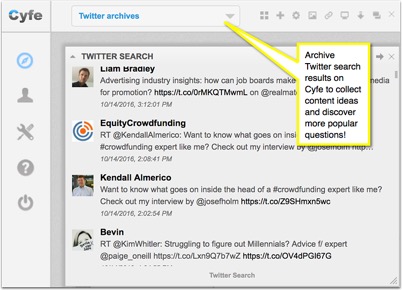
3. Create Your Monthly Editorial Calendar
Finally, when you have created your spreadsheets and systems to record content ideas, you can also set up your actual editorial calendar. I recommend doing that at least quarterly (if you publish at least one article a week) or monthly (if your publication schedule is pretty active).
CoSchedule is a great platform to put together monthly editorial calendars and delegate different aspects of content marketing to different team members with whom you are working. Beyond CoSchedule, there are many other calendar solutions you may want to check out, especially if you use WordPress as a content management system.
When putting your content schedule into CoSchedule, keep referring to your keyword spreadsheet. Use a to-do list feature for each article title you are adding to your calendar. This will help you keep track of smaller tasks such as drafting, editing, notifying participating experts, promoting on social media, etc.:
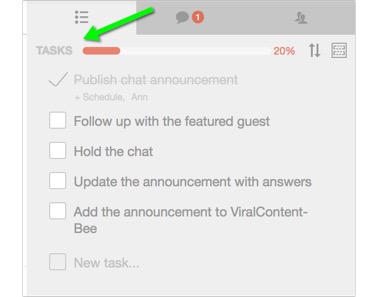
When working through your keyword worksheet, hide rows with keywords you have already put into your calendar. This way you'll be able to focus on the rest when working on the following months.
Once you have gone through most of your keywords in your worksheet, use this article to expand your keyword lists. Now, rinse and repeat!
What's your routine behind planning your content marketing?
Ann Smarty is the Brand and Community manager at InternetMarketingNinjas.com. Ann has been into Internet Marketing for 10 years, she is the former Editor-in-Chief of Search Engine Journal and contributor to prominent search and social blogs including Small Biz Trends and Mashable. Ann is also the frequent speaker at Pubcon and the host of regular Twitter chats #vcbuzz and #myblogu



